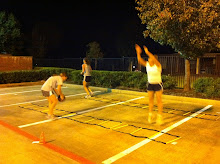The FDA recently informed 17 food manufacturers that their food labels mislead consumers about the health benefits of their products. The misrepresented claims included “100% Juice,” “No Sugar Added,” “Healthy Options,” and “Fortified with Antioxidants.”
While the FDA is cracking down on manufacturers, you still need to decipher for yourself what’s healthy. Keep in mind that food packaging is nothing more than an advertisement, an attempt to entice you to buy one product over another. Oftentimes the label is downright deceptive. Here’s what to look for to avoid getting tricked by food labels.
Healthy
A food can be labeled “healthy” if it’s low in fat (especially saturated or trans fat) and has limited cholesterol and sodium, but that doesn’t mean the item has the lowest amount of fat or the lowest sodium. In other words, it still may not be your healthiest choice.
What to look for: Don’t rely on packaging. Look for the cleanest and least processed form of food. Look for grains that are high in fiber, fruits that are in season, and natural nuts and nut butters that give your body fantastic fats. Keep highly processed foods to a minimum.
What to look for: Don’t rely on packaging. Look for the cleanest and least processed form of food. Look for grains that are high in fiber, fruits that are in season, and natural nuts and nut butters that give your body fantastic fats. Keep highly processed foods to a minimum.
Organic
While there are hundreds of products emblazoned with the promise of being “all natural” and “organic,” many are not.
What to look for: Choose items with the United States Department of Agriculture (USDA) organic symbol. Keep in mind that “natural,” “all natural,” “hormone-free,” and “free range” are not the same as “organic.” To be organic, a product must contain 95 percent organic ingredients. Check the ingredients to confirm that the product is certified organic by the USDA.
What to look for: Choose items with the United States Department of Agriculture (USDA) organic symbol. Keep in mind that “natural,” “all natural,” “hormone-free,” and “free range” are not the same as “organic.” To be organic, a product must contain 95 percent organic ingredients. Check the ingredients to confirm that the product is certified organic by the USDA.
Made With…
There are dozens of products pictured with bunches of fresh grapes, waves of grain, and many more that claim to be loaded with real fruit juice, whole wheat, and other ingredients. Many of these products are actually a combination of the promised ingredient mixed with other products or extracts of the desired ingredient.
What to look for: This label only means that the ingredient is included in the product (not necessarily as the main ingredient). Look for products with 100% whole grains or 100% juice (not juice cocktail).
What to look for: This label only means that the ingredient is included in the product (not necessarily as the main ingredient). Look for products with 100% whole grains or 100% juice (not juice cocktail).
Light or Lite
While a lighter version of a full-fat or high-calorie foods is at first glance better than the original version, keep in mind the calories, serving size, and other ingredients (sodium, etc).
What to look for: This label means that the food has 50 percent less fat or 1/3 fewer calories than the same brand’s regular version. So flip it over to check out the nutrition label. You’ll have a better idea of proper serving sizes and other ingredients.
What to look for: This label means that the food has 50 percent less fat or 1/3 fewer calories than the same brand’s regular version. So flip it over to check out the nutrition label. You’ll have a better idea of proper serving sizes and other ingredients.
Good/Excellent Source of…
This label means that one serving provides 10 to 19 percent of your total daily needs for a specific nutrient, such as fiber, calcium, and vitamin A. So don’t mistake it as supplying what you need for the day of a particular nutrient.
What to look for: On the nutrition label, look at how much of your daily value this source provides. You’ll want to make sure that you make up for the remaining percentage by eating other foods high in those nutrients.
What to look for: On the nutrition label, look at how much of your daily value this source provides. You’ll want to make sure that you make up for the remaining percentage by eating other foods high in those nutrients.
While not getting enough nutrients is bad, getting too much can also be dangerous. Be aware of foods that have vitamin and mineral levels well above the dietary reference intakes. In particular, watch out for the fat soluble vitamins—A, D, E and K—because they're stored in the body, and when consumed in excess they're not excreted like water soluble vitamins. Your best bet: Aim to get most of your nutrients from fresh foods instead of water with antioxidants or energy drinks loaded with vitamins, for example. Water and fruit would be a better choice.
Reduced…
A food labeled as “reduced” has 25 percent less (fat, saturated fat, sodium, sugar, cholesterol, or calories) per serving than the regular version of the same food. But just because something has reduced fat doesn’t mean it isn’t still too high in sodium, sugar, or other ingredients.
What to look for: Again, flip the product over and take a look at the nutrition label. Reduced fat cheese and reduced calorie beverages may not give you the health benefits or calorie savings you’re looking for.
What to look for: Again, flip the product over and take a look at the nutrition label. Reduced fat cheese and reduced calorie beverages may not give you the health benefits or calorie savings you’re looking for.




















No comments:
Post a Comment